Updated January 2020 with special thanks for valuable input from donor families and inquiries about the gift of life.
Lots of people are curious about how the donation process works and what steps to take when a loved one passes away. You’ll be glad to know that, for those on the registry, neither you nor your family members need to do anything else or keep track of donor cards or other documentation. Registering records your decision to be a donor and makes it known to the right people at the right time, automatically.
It’s important to remember that emergency medical personnel, doctors and hospital staff will always work to save lives first. Only after all life-saving efforts have been exhausted do hospitals notify organ and tissue recovery agencies to begin evaluating whether the person might be a candidate for donation.
This short video provides important details about the donation and transplantation process you may find helpful, educational and inspiring:
Infographic from Association of Organ Procurement Organizations (AOPO): How the Organ Donation Process Works
Continue reading if you’d like for more details about the donation process…
For organs to be eligible for donation, a person must pass away in a hospital on a ventilator. A traumatic brain injury or stroke leading to brain death are the most common causes of death that allow a person to become an organ donor, but not the only ones. In some cases, a person who suffers cardiac death can become an organ donor, but only under very specific conditions. The critical point is that blood must continually circulate oxygen to organs in order for them to remain viable for donation. By law, hospitals are required to notify organ recovery agencies of any imminent death in their facility.
Depending on the circumstances, those who pass in a different way outside a hospital setting may still be candidates for cornea and tissue donation, which are equally important. In these cases, donation logistics are coordinated by the funeral home or medical examiner’s office and the appropriate tissue and eye banks.
How do families know if their loved one is registered or may become a donor?
Upon notification by hospital staff, a funeral home or medical examiner, specialists from the donation organizations begin gathering clinical information about the potential donor and consult the Donate Life database to see if the person has registered. Regardless of a person’s registration status, family members will only be contacted by organ, eye and tissue recovery specialists if their loved one is a likely candidate for donation. If donation is not an option, donation specialists will not contact the family to spare them any unnecessary hassle during what is an already stressful time.
When a likely donor is registered, a legal Document of Gift form is created from the registry and is provided to the person’s next of kin. If a likely donor is not registered, the specialists will approach the next of kin to request consent. After consent has been obtained, either through the registry or from the next of kin, medical tests will be done to further determine the medical suitability of organs and tissues.
How long does the donation process take?
Each donor case is unique because there are countless medical and logistical factors involved. The entire donation process can happen very quickly or may take a few days. After brain activity has stopped, machines must be used to keep the donor’s heart and lungs functioning artificially in order to keep blood and oxygen flowing to maintain basic organ function. These machines are sometimes called “life support,” but in the case of a donor whose life has ended, the lives being supported are those of the patients who will receive the precious, donated organs.
During this time, specialists from the organ and tissue recovery organizations can provide as much information about the process as the donor’s family desire. Some families want to be very informed, while others wish to stay removed from the clinical details. Because each family is different, the specialists work hard to understand and respect their preferences.
Because cornea and tissue donation do not require a donor to be on artificial support, these gifts can be recovered even after the donor has been transferred to the Medical Examiner’s office or funeral home.
How and where are the organs and tissues recovered?
The organ, eye and tissue recovery is performed by trained surgeons and medical personnel, most often in a hospital operating room, but sometimes in a specialized facility. When the recovery is complete, all incisions are closed, much as they would be following surgery.
What happens to a donor after organs and tissues are recovered?
Afterward, the body is released to the funeral home or mortuary of the family’s choice — as would have been the case had donation not been an option. There, the full range of funeral options is open to donors, including open-casket viewings, funeral, and memorial services or cremation. Some donors even make arrangements for their remains to be donated to science through a whole body program.
At all times, the donor is treated with the utmost respect and dignity.
After all, the decision to donate is one that saves and heals lives.
Still have questions?
Use our Ask a Question feature, or contact us. We’re happy to help answer any questions you may have.
